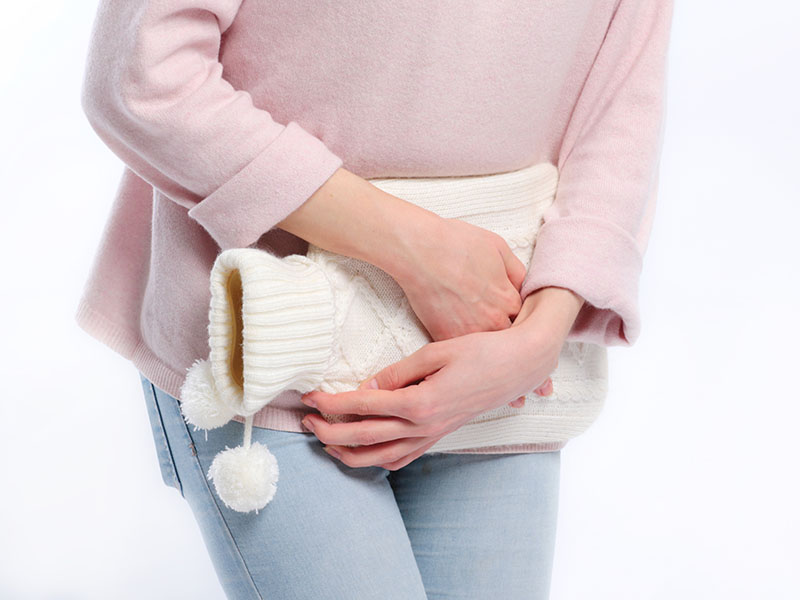
Free initial consultation
Click here to find out if you are eligible.
Check eligibility Dr Sally Ghazaleh, Pain Consultant at London’s, Whittington Hospital and Female Health Expert at Integro Clinics thinks it might be.
Dr Sally Ghazaleh, Pain Consultant at London’s, Whittington Hospital and Female Health Expert at Integro Clinics thinks it might be.
“In my cannabis clinic, I have seen women who have suffered from chronic pelvic pain continuously over the years. They have tried multiple medications and undergone different specialist treatments to reduce the pain, all to no avail. In fact, not only were some of the traditional approaches ineffective but the drugs they were prescribed such as opioids and anti-neuropathic medicines had very unpleasant side effects. As a last hope to reduce their pain they gave medical cannabis a try and many found that it could help them live a normal life after years of suffering. Patients stated that as well as reducing pain, they felt that medical cannabis considerably decreased gastrointestinal symptoms, sleep problems, feelings of depression and anxiety. Most importantly an appreciable number reported they were able to reduce some of their traditional medication.”

What is pelvic pain? And given that thousands of women suffer from it, why is it such a silent epidemic?
Female pelvic pain is a cover all term that can range from chronic low level up to agonising pain felt by women that arises from the pelvic area. It can be responsible not only for chronic suffering but also for notable disability (Hubscaher et al.2007, Moore &Kennedy 2007). It can have a massive impact upon the individual’s ability to engage in pain free sexual intercourse and can cause great psychological suffering and depression.
If resulting from nerve pain it may appear idiopathic or it can relate to a specific condition such as vulvodynia, painful bladder syndrome, myofascial pain resulting from muscle spasms in the pelvic floor, which can refer pain through the stomach, back and to trigger points, which can be excruciating and endometriosis.
“It is a fact that women experience more intense and long- lasting pain complaints than men, even for conditions occurring with similar frequency in the two sexes. Lack of knowledge by GP’s and perhaps being met with skepticism, feeling rejected, ignored, lack of comprehension and stigma towards women’s health contributes to women’s pain. Symptoms are frequently not diagnosed or go untreated for a long time. This results in women left suffering not only with chronic pain but also the huge psychological impact of this on them and their family.” Says Dr Ghazleh
Pelvic Pain mechanisms are complex, interconnected and can be divided into three main categories of pain: the nociceptive, the inflammatory, and the neuropathic pain.
The current pain management strategies for pelvic pain focus mainly on medical treatments such as hormonal therapy, pain medicines or nonsteroidal anti-inflammatory drugs (NSAIDs) and/ or surgical re-sectioning. The growing understanding of how new drugs such as cannabis medicines can help in this field is very exciting. The endocannabinoid system (ECS) is figuring lately as an important factor in pain mechanisms.
The ECS includes signaling molecules (anandamide and 2-AG) and cannabinoid receptors (CB1 and CB2). Endogenous cannabinoids and
cannabinoid receptors exist at various levels in the pain pathways, from peripheral sensory nerve endings to spinal cord and supraspinal centers.
Significantly CB1 receptors are highly expressed in the uterus, as well as in multiple nonreproductive tissues. The CB2 receptors are preferentially expressed abundantly in the immune system, intestines and in other tissues such as the lungs, uterus, pancreas, and skin.
The interactions between the ECS and pain associated mechanisms in pelvic pain patients occur at several levels: changes in central and peripheral neural system, involvement of neuropathic and inflammatory pain, psychological interaction with the pain experience, hormonal variability of the pain, and the expression of cannabinoid receptors, enzymes & ligands.
Targeting endocannabinoid modulation to treat pain is probably more than just treating the pain, it is also targeting the psychological impact it has on the patient, hence why it can be very effective.
“One pain mechanism will prevaill over the others, which could be due to differences in the pathogens or disease entities. This should be considered when developing strategies in personalised medicine, which could certainly involve the use of medical cannabis to produce a better outcome. It goes without saying, that although I have seen positive results using medical cannabis for women’s pelvic conditions additional research is urgently required to assess the effectiveness of quality controlled medicinal cannabis in this area. We are only just starting to understand the full workings of the human endocannabinoid system and what a greater understanding of turpines and the molecular potential of cannabis medicines can bring us.” – Dr Sally Ghazaleh
The Patient’s Story:
Claire Singer was in her teens when she began to develop pain when she peed and had sexual intercourse. She experienced a constant unpleasant feeling of pressure in her bladder, even after emptying it.
“I was spending half my life with a hot water bottle between my legs and even though my Mum and I went to countless doctors, they simply kept giving me antibiotics that had no effect or asked me to pee on a stick to look for an infection, that always came back negative. I kept being told that I had interstitial cystitis and that as I grew older it would go away – but it didn’t. The fact that I was dismissed as making a big fuss by every doctor I saw, made me frustrated and depressed. The extreme feeling of nausea the pain produced, left me totally debilitated. I had to carry a bottle of soda water with me at all times to help with the sensation.” Claire Singer
It was not until her mid-30’s that Claire saw a gynecologist who diagnosed painful bladder syndrome and pelvic floor myofascial pain. The fact that she finally had been listened to and had a diagnosis marked the start of her journey to understanding and being able to cope with her pain.
Claire had started to self-medicate at the age of 17, using recreational cannabis, which she found reduced her pain and eased the nausea. She moved to using medicinal cannabis when she became a patient of Integro Clinic. One of the UK’ s most experienced and knowledgeable pain clinics. They worked with Claire to discover the correct prescription; oil during the day and a flower vape in the evening to help with her pain
“ Cannabis medicines give my pain a softness and blurs its’ sharp edges making it much more tolerable and easier to deal with. I also find it much easier to sleep, meaning my stress levels are significantly lower, which in turn reduces the amount of pain I feel. Through self-care, awareness and cannabis medicines I can now lead a much higher quality life.” Claire Singer
Ref:
1. Cannabis and Cannabinoid Research Volume 2.1, 2017 DOI: 10.1089/can.2016.0035
2. Chronic pelvic pain and dysfunction, Practical Physical Medicine, Leon Chaitow, Ruth Lovergrove Jones.
If you have had similar experiences to Claire and are interested in speaking to Dr Sally Ghazaleh please contact them @ Integro clinics